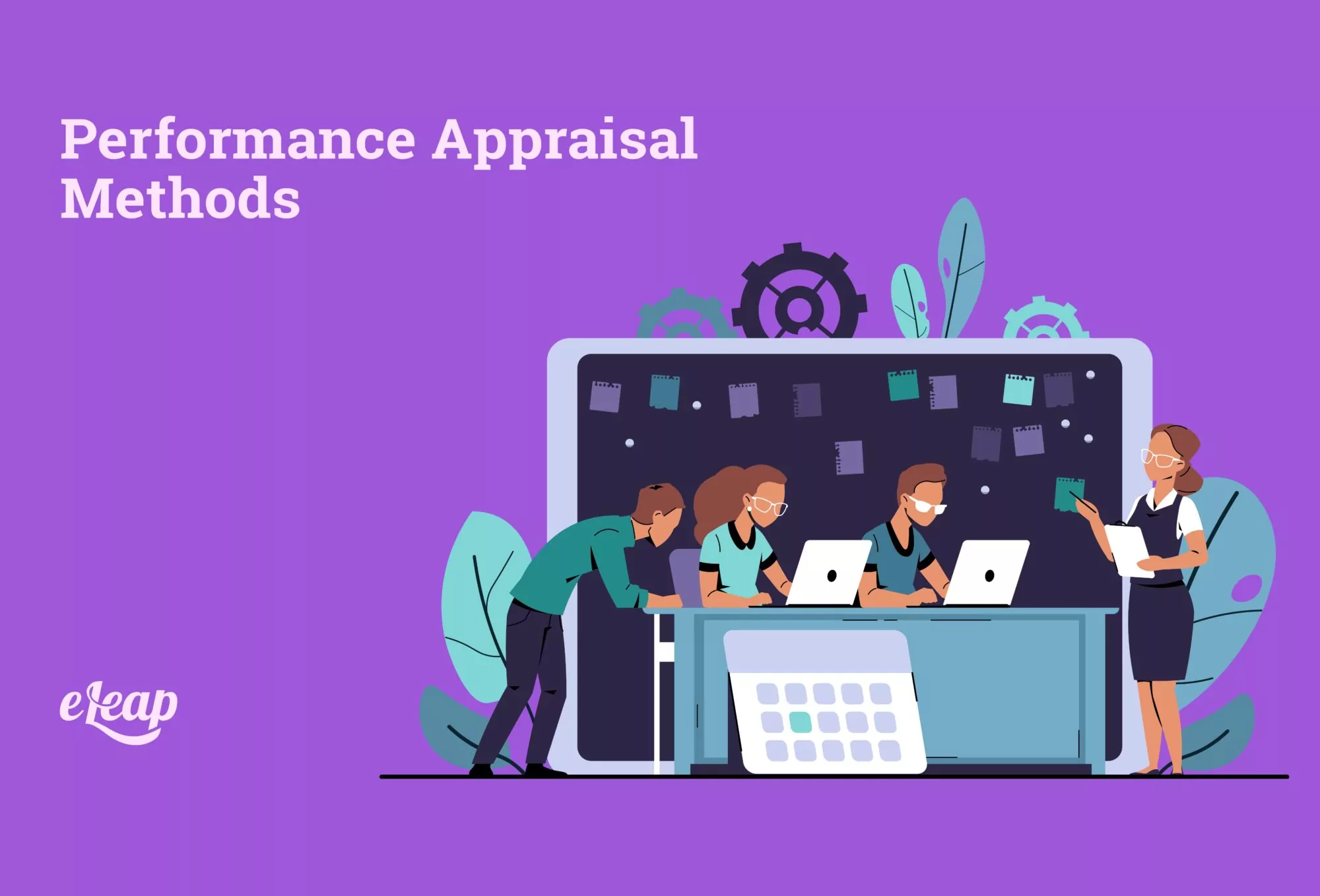Performance Appraisal Methods
How to Conduct a Productive Performance Appraisal

Most employees and managers can agree that performance appraisal season is one of the most dreaded times of the year. But it doesn’t have to be that way. A lot of the stress and pain that come from performance appraisals can be resolved by simplifying and clarifying a few aspects of how they’re conducted. In this article, we are going to go through the process step-by-step and review methods of how to conduct a productive performance appraisal without the pain that so many employees and supervisors expect. Explore how eLeaP®’s Performance Management Platform can simplify evaluations, boost productivity, and drive measurable results.
In the meantime, download the eBook – “The Skeptics Guide to Performance Management” and get ideas to improve your performance appraisals.

Tips for Preparing Appraisals
Before we get into the performance appraisal process, you want to work on developing an appraisal method that is detailed and specific. It doesn’t have to be a long, drawn-out research project, but investing a little more time into how you craft your performance appraisals will show employees that you care about their positions in the company.
The first tip is to have both supervisors and employees keep well-organized documents of their wins, successes, compliments, and customer commendations. You don’t have the time to hand-hold employees throughout their careers, so this is also a great way of collecting the information you need for their appraisals. This will save a lot of time during the preparation phase and also lets employees put their best foot forward at the start of their appraisals.
Don’t be afraid to talk to other employees and managers in the business. Send an email or call up an internal customer, vendor, or anyone else that the employee works with regularly. Ask what the employee has done well, what they could have done better, and what the customer would like to see in the future. The point here is to develop a well-rounded view of the employee. This is far more accurate than just yours and your employee’s perspective. We recommend using the peer review method.
Writing an Appraisal
First and foremost, get specific about details. Don’t go over the top. If you overload an employee’s appraisal with too many points, they won’t be able to hone in on what’s important, and they’ll struggle to meet your expectations. Setting the bar too high breaks down your employees’ confidence and could actually make them less productive. Try to whittle it down to just three or four main points. Identify their biggest weaknesses and biggest strengths and make those the points that need addressing.
Answer these three questions:
- What did they do well that they should keep replicating?
- What did they do that they should do differently?
- What will help them continue to grow?
Setting the Tone
Let’s stop for a moment and consider what makes performance appraisals such a difficult time for employees. At the heart of an appraisal, it’s about giving feedback. The problem is, if the feedback isn’t given with the right tone, it can come off as chastising. Even if employees hear ten great things about what they’ve accomplished over the past year, they will still go home thinking about their one failure. This can be very discouraging and leave them to wonder why they even bother putting in their best effort.
For this reason, it’s important to consider the tone of your appraisal. Performance appraisals should motivate and encourage employees. The trick here is to focus your criticism. Every situation has two sides, so remember to point out not just the negatives but also the positives.
Also, keep it simple, but be specific and based on examples. Avoid generalizations like “great performance,” “great year,” “work harder,” and “be more time-oriented.” This sort of feedback doesn’t show employees where they’ve messed up, so they can’t go about improving. Instead, your employees will close off and become defensive.
Remember the Focus
Don’t forget that an appraisal is meant to appraise something that has already happened. You should be evaluating your employee’s performance since their last review. Talk about how the employee has made an impact on the company, how their work has contributed to their and the company’s goals, and how their past efforts can continue contributing to future goals. Bridging the past with the future is motivating and inspiring and is a far more effective way of conducting a performance appraisal.
Depending on how frequently you conduct appraisals—ideally, the more frequently, the better—you may be sitting on feedback from a while ago. It’s okay to bring this feedback up, but generally, if it’s a recurring problem, an appraisal might not be the best time to do so. Wait until the employee makes the same mistake again and address it then. While appraisals should be specific, they should be focused more on general trends rather than specific, targeted behaviors. Those types of problems are better suited to probation or warning.
Include the Employee
Self-appraisals are a key part of the performance appraisal process. They get employees to reflect on their past performance and put them in the right frame of mind for your meeting. The more time they spend thinking about their performance, the more accountable they’ll be. Self-appraisals are also an opportunity for employees to share their perspectives, which makes the appraisal process fairer and more balanced.
But pre-meeting appraisals aren’t enough. After conducting the appraisal, it’s important to sit back down with the employee and go through their rating. Make sure you have enough time to talk it through, and be sure to set up a time that fits the employee’s schedule. You don’t want to make them feel ambushed.
Conclusion
Following these steps to simplify and destress performance appraisals can go a long way to building trust between you and your employees and also building a happier, healthier work environment. Just because it’s appraisals season doesn’t mean that everyone has to be on edge. Remembering to set the tone and focus of the meeting, doing your homework beforehand, and including the employee in their review are exactly the steps you need to conduct a truly productive performance appraisal.